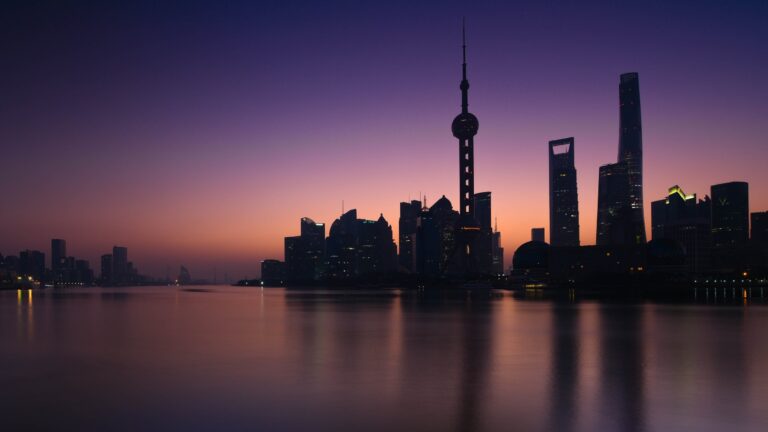Several months ago, some of our dearest Chinese friends came into town and took my husband and I out for dinner. The evening with them was great and we enjoyed hearing about the fascinating things they do in life. We often call them our “Chinese bohemians” because they are constantly traversing the world in search of true beauty and ideals. Sometimes it seems like they were born a century too late for their passions. We love them greatly.
Since that night, however, I’ve been doing a lot of soul searching regarding the difficulties of cross-cultural friendship. There were many uncomfortable things about our dinner together that night. As with anyone living outside of their home culture, our friends have a lot of quirks. They are still unaccustomed to American restaurant dining, and of course they struggle with various linguistic and cultural expectations. How do you interact appropriately with the waitress? Do you really have to tip that much money? I found myself worrying most of the evening about how to maintain the good graces of our waitress and the other patrons, while at the same time honoring our friends’ Chinese expectations as the dinner’s hosts.
As I struggled with feeling self-conscious and concerned about people’s opinions, I became aware of the tension in my heart between feeling responsible as a Christian to live peaceably among my fellow Americans and the call to welcome the stranger at our gates. I realized that lurking in my heart was the desire to be culturally comfortable, loving my Chinese neighbors insofar as it was easy. I have wrestled with this realization since.
In my early twenties, I lived and ministered in East Asia for a couple of years. Before I left America, I underwent numerous trainings on cross-cultural ministry. I sat in excellent seminars on understanding Asian culture and how to be a good guest while serving abroad. Once I arrived in Asia, that training was priceless. I can’t tell you how many stories I have about odd, funny, and touching cross-cultural moments.
One of the most important factors in these trainings was the message of sacrifice. None of us had to go overseas and eat weird food and try to adjust to a new life. But we all wanted to for the glory of God, and so from day one personal and cultural sacrifice was the theme of our song. We gave up our comforts and cultural expectations, serving in what we hoped was the legacy of great men and women such as Hudson Taylor, Robert Morrison, David Brainerd, and Amy Carmichael. Being told to expect sacrifice was so vitally important because when the moments of cultural frustration and social shame actually came, we were able to remember the joy of ministering to the people whom we loved. Humility brought us closer to Christ and there is never a lack of joy when hidden in him.
What I have realized since the dinner with my friends is that the American church has long associated sacrifice with the work of those spreading the kingdom abroad; but we don’t have much of a vocabulary for it in our own neighborhoods. We assume that in serving cross-culturally overseas, we inherently give up a certain degree of respect. We will no longer be cultural insiders and we go to great lengths to train and prepare for this reality.
But it is a lot harder to have those same expectations when you are in your own culture. My Chinese friends helped reveal to me how much I expect to be a cultural insider here in America. By default, I expect to go to dinner in my own neighborhood and feel comfortable throughout the evening. I readily associate cross-cultural sacrifice with my life overseas, but have found it more difficult to surrender my desire for respect when I’m eating down the street. I have realized that the American church is far more equipped to sacrifice culturally for the kingdom in an Asian megacity than we are in our own backyards.
The truth is that engaging cross-culturally on any continent will always require sacrifice. We need a paradigm shift. The church is not called to sacrifice only when it is “over there;” rather, as the demographics of America change, we are called to this cultural sacrifice “here” in our own backyards, at our own neighborhood restaurants.
Often when I am talking to people about changes the American church could make in order to minister vitally among international populations in our own neighborhoods, the response I receive is, “That’s just a lot to ask.” Though I have never said this directly to anyone, what I often feel like saying is, “Of course it’s a lot to ask!” Asking the American church to change in these ways is asking it to sacrificially participate in the Lord’s Great Commission to the same extent we have asked our international missionaries to sacrifice.
I believe that in America today, all Christians are called to the same level of cross-cultural sacrifice that we have long expected of those working outside our boarders. Sacrifice has long been part of the church’s call to bring the gospel to the ends of the earth. But rather than outsourcing that call to international missionaries, we are at a point in history in which God is calling the entire American church to sacrifice from the pastor in the pulpit to the layman in the pews. The missional sacrifice of the church is no longer to send a few members to foreign lands, but rather to suffer as one body, experiencing the humility of Christ in our own neighborhoods so that the fullness of the gospel might flourish in every corner of the world, including our own.
Though I understand and believe in the theology behind these ideas, I am realizing more and more the messiness of my heart when I try to live this out in real life situations. It is messy to live in that space, watching friends and waitresses fumble through tricky miscommunications and uncomfortable cultural foibles. And it is difficult at times to want to be identified with such messiness when it would often be so much easier to just keep everything separate.
But just because it is hard, and sometimes embarrassing, to be identified with uncomfortable situations, the church is not allowed to ignore Christ’s call and example. Just because we are on this side of the ocean, we do not have the right to expect cultural comfort. We are called to sacrificially engage across the lines of Babel, surrendering our lives, pride, and expectations in the name of Jesus.
Thankfully, the good news is that there is joy in this surrender. After all, the mess is where Christ resides. The joy is not flippant – culture is a serious and beautiful thing, and not something we thumb our noses at easily. But rather, the joy is good and healing. It lets us put our cultural expectations and concerns into their proper place.
My years living in Asia were some of the most difficult in my life, but they were also among the most joyful. In the same way, I know that the moments of cross-cultural frustration here in America will also be deeply joyful. When I think back to the dinner we shared with our friends, my first thought is not the difficulties, but rather the fellowship we shared. As Hebrews 12:1 reminds us, Jesus knew joy within the messiness and the sacrifice of his greatest of cross-cultural endeavors. We should expect no less.
“Therefore, since we are surrounded by so great a cloud of witnesses, let us also lay aside every weight, and sin which clings so closely, and let us run with endurance the race that is set before us, looking to Jesus, the founder and perfecter of our faith, who for the joy that was set before him endured the cross, despising the shame, and is seated at the right hand of the throne of God.”
Hannah Nation serves as the blog editor for the China Partnership. She is a student at Gordon-Conwell Theological Seminary and works full-time on staff with China Outreach Ministries, serving students in the Boston metro area. She first traveled to China in 2005 and has cared deeply for the country and its church ever since.































